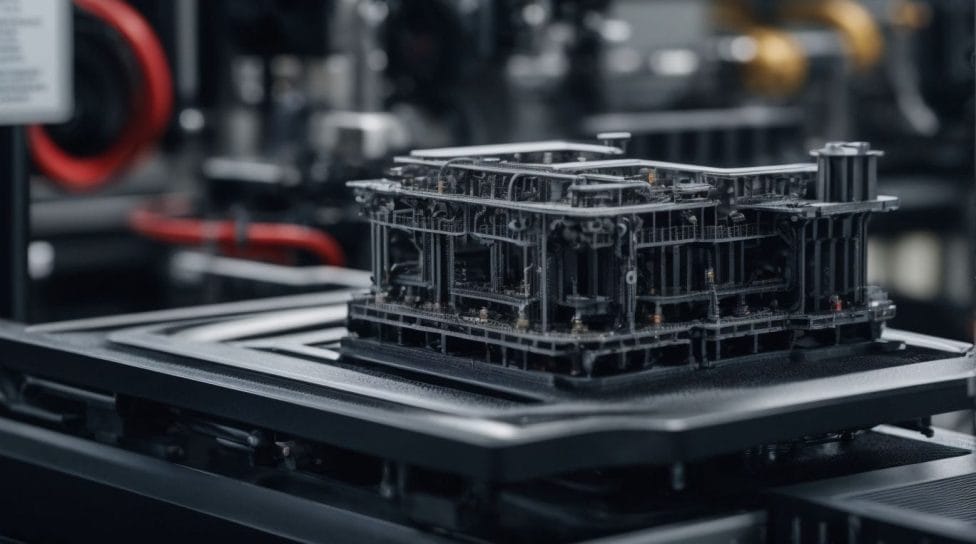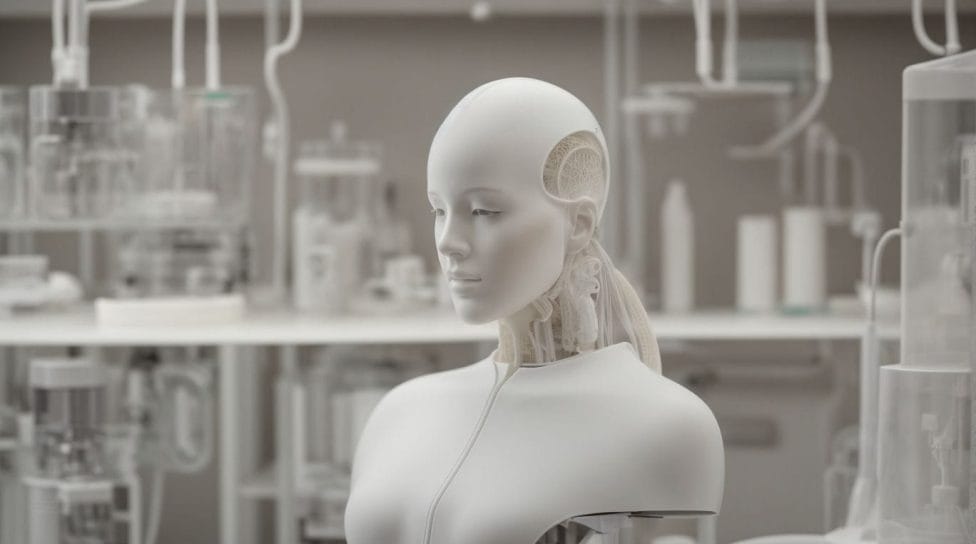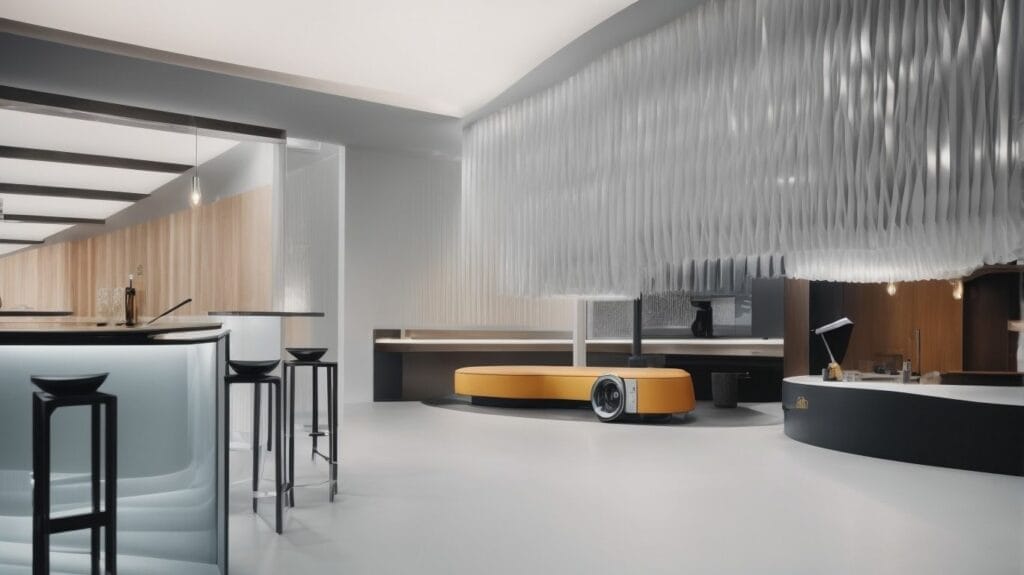3D printing, also known as additive manufacturing, is a revolutionary technology that has transformed various industries and sectors. It involves the creation of three-dimensional objects by layering materials based on a digital design. The applications of 3D printing are vast and ever-expanding, offering exciting possibilities in areas such as manufacturing, medicine, architecture, construction, education, and even art and design.
In the realm of manufacturing, 3D printing has revolutionized the production process. It enables rapid prototyping, allowing for quick and cost-effective creation of product prototypes. This accelerates the design iteration process and brings products to market faster. 3D printing also facilitates customization and personalization of products, catering to individual needs and preferences. It is utilized in tooling and jig production, creating specialized tools and fixtures that enhance manufacturing efficiency and precision.
In the field of medicine, 3D printing has made significant advancements. It plays a crucial role in prosthetics and orthotics, allowing for the creation of customized and functional artificial limbs and braces. The technology has opened doors to tissue and organ engineering, enabling the production of bioengineered tissues and organs for transplantation. It also aids in surgical planning and training, providing surgeons with accurate and tangible models to practice complex procedures and improve patient outcomes.
In architecture and construction, 3D printing has emerged as a game-changer. It facilitates conceptual design and visualization, allowing architects and designers to transform their ideas into tangible models quickly. Furthermore, rapid construction prototyping with 3D printing enables the fabrication of scale models and prototypes, helping in testing and refining building designs. The technology also enables the creation of customized building components, offering new possibilities in architectural design and construction efficiency.
The education sector has also embraced 3D printing as a tool for hands-on learning and prototyping. Students can bring their ideas to life by designing and fabricating tangible objects, fostering creativity and problem-solving skills. 3D printing also aids in the visualization of complex structures, allowing students to explore intricate concepts and improve understanding in subjects like engineering and biology.
Lastly, 3D printing has transformed the world of art and design. Artists and designers can utilize this technology to create intricate sculptures and installation art pieces that were previously challenging to produce. 3D printing has entered the realm of jewelry and fashion, enabling the production of unique and customized pieces that push the boundaries of traditional design.
With its limitless possibilities, 3D printing continues to reshape industries and unlock new avenues for innovation and creativity. As technology advances further, we can expect to witness even more astounding applications in various fields, shaping the world we live in.
Key takeaways:
- 3D printing revolutionizes manufacturing: It enables rapid prototyping, customization, and tooling production, allowing manufacturers to bring products to market faster and more efficiently.
- 3D printing transforms medicine: It facilitates the creation of prosthetics, organs, and surgical planning tools, enhancing patient care and surgical outcomes.
- 3D printing reshapes architecture, construction, and education: It enables faster prototyping, customization of building components, and hands-on learning experiences in schools.
What is 3D printing?

Photo Credits: Futureproof3D.Com by Michael Robinson
What is 3D printing?
3D printing, or additive manufacturing, is a cutting-edge process that utilizes a digital file to produce three-dimensional objects. By sequentially layering materials on top of each other, 3D printing creates the desired shape. This groundbreaking technology has brought about a revolutionary transformation in multiple sectors, such as healthcare, automotive, aerospace, and fashion. The precision and customization capabilities of 3D printing have led to a reduction in waste and costs involved in production. Remarkably, the applications of 3D printing are vast, ranging from the fabrication of prosthetics and bespoke car components to the creation of astonishing architectural models and intricate jewelry designs. The adaptability and potential for innovation offered by this remarkable technology make it an immensely exciting prospect for the future. We encourage you to delve into the possibilities and potential enhancements that 3D printing can bring to your industry, propelling the boundaries of what is conceivable.
3D Printing in Manufacturing

Photo Credits: Futureproof3D.Com by Lawrence Allen
3D printing is revolutionizing the manufacturing industry, creating a new era of possibilities. In this section, we’ll dive into the transformative applications of 3D printing in manufacturing. From rapid prototyping to customization and personalization and even tooling and jig production, we’ll unravel the groundbreaking potentials of this technology. Get ready to explore how 3D printing reshapes the manufacturing landscape, fueling innovation and efficiency like never before.
Rapid Prototyping
Rapid prototyping is a fundamental application of 3D printing technology, enabling the quick and cost-effective production of prototypes.
- Accelerated design process: With rapid prototyping using 3D printing, designers can transform their concepts into physical models in a fraction of the time it takes with traditional prototyping methods.
- Iterative testing: Rapid prototyping enables designers to adjust their designs and efficiently test them for functionality and fit.
- Reduced costs: By eliminating the need for expensive tooling and molds, 3D printing significantly reduces the cost of the prototyping process.
- Complex geometries: 3D printing allows for the creation of intricate and complex geometries that would be difficult or even impossible to produce with traditional manufacturing methods.
- Customization: Rapid prototyping empowers designers to develop personalized prototypes tailored to specific requirements or individual needs.
- Efficient communication: 3D printed prototypes can be easily shared and communicated among design teams, stakeholders, and clients, facilitating collaboration and feedback.
Customization and Personalization
Customization and personalization are the key benefits of 3D printing. This technology enables individuals to create unique and tailored products that fulfill their specific needs and preferences. A few examples of customization and personalization in the realm of 3D printing encompass:
| Customized consumer products: | People can conceive and print articles such as phone cases, jewelry, and clothing that perfectly align with their style and taste. |
|---|---|
| Personalized medical devices: | 3D printing facilitates the production of prosthetics and orthotics that are precisely tailored to fit the distinct anatomy of each patient, thereby enhancing comfort and functionality. |
| Unique home decor: | Individuals can envision and produce one-of-a-kind home decor items, such as lampshades, vases, or decorative sculptures, adding a personal touch to their living space. |
The capability to customize and personalize products through 3D printing empowers individuals to express their creativity and exert greater control over the design process.
Tooling and Jig Production
Tooling and jig production are key applications of 3D printing in manufacturing. 3D printing enables companies to create customized tooling and jigs for their production processes, reducing lead time and costs associated with traditional manufacturing methods. These tools assist in manufacturing complex components by providing precise alignment and support. By employing 3D printing, companies can enhance production speed and efficiency, leading to significant benefits in tooling and jig production across various industries.
The struggles faced by a manufacturing company, including long lead times and high costs for their tooling and jigs, were resolved by integrating 3D printing into their production process. This enabled them to design and produce tailor-made tools and jigs in a fraction of the time and cost previously required. Consequently, their production capacity increased, and they could meet customer demands more effectively. They witnessed improved productivity and cost savings, effectively showcasing the advantages of 3D printing in tooling and jig production.
3D Printing in Medicine

Photo Credits: Futureproof3D.Com by Jonathan Garcia
In the realm of 3D printing, one fascinating domain that holds immense potential is the field of medicine. Here, we delve into the realm of 3D printing in medicine, exploring the revolutionary applications it offers. From personalized prosthetics and orthotics to advancements in tissue and organ engineering and even surgical planning and training, we uncover the remarkable ways in which 3D printing is reshaping the healthcare landscape. So, fasten your seatbelts as we embark on this extraordinary journey at the intersection of technology and medicine.
Prosthetics and Orthotics
| Prosthetics and orthotics are revolutionized by 3D printing technology, enabling customized, efficient, and affordable solutions for individuals with limb loss or impairment. | |
| Improved customization | 3D printing allows for the creation of prosthetics and orthotics that are tailored to the specific needs and body measurements of each individual. |
| Reduced costs | Traditional prosthetics and orthotics can be expensive, but 3D printing significantly lowers production costs, making these devices more accessible for patients. |
| Faster production | Using 3D printing, prosthetics and orthotics can be produced in a fraction of the time compared to traditional manufacturing methods. |
| Enhanced functionality | The design possibilities offered by 3D printing enable the creation of lightweight, durable, and functional prosthetics and orthotics. |
Tissue and Organ Engineering
| Tissue and Organ Engineering |
| 1. Creation of functional tissues and organs using 3D printing technology. |
| 2. Tissue engineering focuses on developing biological substitutes to restore, maintain, or enhance tissue function. |
| 3. Organ engineering involves recreating complex structures like hearts, kidneys, and livers. |
| 4. 3D bioprinting allows for the precise placement of living cells, growth factors, and biomaterials to fabricate tissues and organs. |
| 5. Advancements in this field can potentially revolutionize personalized medicine and address the organ shortage crisis. |
Surgical Planning and Training
Surgical planning and training are essential applications of 3D printing technology in medicine. Utilizing this advanced technology, healthcare professionals can produce precise anatomical models based on patient-specific imaging data. This enables surgeons to efficiently plan intricate procedures, assess potential risks, and optimize surgical strategies. Furthermore, these 3D-printed models can be used for training, allowing surgeons to enhance their skills and proficiency before conducting real surgeries. The ability to physically visualize and interact with anatomical structures greatly enriches surgical education, fostering the development of innovative techniques. The role of 3D printing in augmenting surgical planning and training cannot be overstated.
3D Printing in Architecture and Construction

Photo Credits: Futureproof3D.Com by Billy Hill
In architecture and construction, 3D printing has revolutionized how things are done. This section takes a closer look at the incredible applications of 3D printing in these fields. From conceptual design and visualization to rapid construction prototyping and customized building components, we’ll explore the exciting ways that 3D printing is shaping the future of architecture and construction. Get ready to be amazed by the creative possibilities and innovative solutions that this technology brings to the table!
Conceptual Design and Visualization
Conceptual Design and Visualization are essential applications of 3D printing in numerous industries. In architecture, 3D printing enables architects to fabricate intricate models and visualize designs before the commencement of construction. This advanced technology empowers them to experiment with different ideas and make well-informed decisions regarding the final design. Regarding education, 3D printing greatly enhances hands-on learning by empowering students to fabricate tangible objects and comprehend complex structures. In the realms of art and design, artists can leverage the power of 3D printing to transform their imaginative concepts into reality, whether it be through sculptural installations or one-of-a-kind jewelry pieces. By revolutionizing the way we conceptualize and visualize ideas, 3D printing pushes the boundaries of creativity and innovation.
The concept of Conceptual Design and Visualization has been present for centuries. Throughout history, artists and architects have employed various techniques and tools to visually represent their ideas before giving them physical form. From hand-drawn sketches to detailed scale models, these methods have allowed creative individuals to interact with their concepts tactilely. With the introduction of 3D printing technology, the process of Conceptual Design and Visualization has become more accessible and efficient. Now, artists and designers can effortlessly transform their visions into physical objects, thus revolutionizing design and fostering boundless creativity.
Rapid Construction Prototyping
Rapid construction prototyping is a crucial application of 3D printing in architecture and construction. It offers numerous benefits, including saving time and cost, enabling design iteration, and enhancing construction efficiency. There are various ways in which rapid construction prototyping can be utilized:
- Testing and validating design concepts before actual construction begins.
- Creating scale models and mock-ups to visualize and communicate design ideas effectively.
- Producing architectural components and building elements with complex geometries.
- Facilitating the creation of customized and personalized structures.
Rapid construction prototyping with 3D printing revolutionizes traditional construction, enabling faster and more precise construction techniques.
The first significant achievement in rapid construction prototyping using 3D printing occurred in Dubai in 2016. The “Office of the Future,” as it is known, became the first major 3D-printed building. This entire building was created using a mobile 3D printer. This accomplishment marked a significant milestone in rapid construction prototyping and showcased the immense potential of 3D printing in architecture and construction.
Customized Building Components
Customized building components are a fundamental application of 3D printing in architecture and construction. This groundbreaking technology allows for producing tailor-made building elements that fit the project’s requirements perfectly. Explore these examples of customized building components made achievable through 3D printing:
- Complex geometries: 3D printing makes it possible to manufacture intricate architectural shapes that were previously challenging to achieve using traditional manufacturing methods.
- Facade elements: Custom 3D-printed facade components not only enhance the visual appeal of buildings but also provide functional advantages such as improved insulation or solar shading.
- Structural components: Load-bearing elements like beams and columns can be 3D printed with optimized designs to increase strength and cost-efficiency.
- Interior Features: Unique 3D-printed interior designs, including decorative panels or furniture pieces, can be created to enhance the overall aesthetic of a space.
Incorporating customized building components through 3D printing has the potential to revolutionize the construction industry by offering greater design freedom and efficiency. As materials and technologies advance, the possibilities for customized building components are constantly expanding. Architects and construction professionals should actively explore the potential of 3D printing to create innovative and sustainable structures.
3D Printing in Education

Photo Credits: Futureproof3D.Com by Bradley Campbell
In the fascinating realm of 3D printing, education takes on a whole new dimension. As we delve into the topic of 3D printing in education, prepare to be amazed by the immersive experience of hands-on learning and the ability to bring complex structures to life through visualization. Get ready to explore the limitless possibilities that 3D printing brings to classrooms, where creativity, innovation, and practical applications converge. You won’t want to miss the transformative power of this technology in shaping the future of education.
Hands-on Learning and Prototyping
- Hands-on learning and prototyping are two key applications of 3D printing in education. This technology allows students to engage in interactive and practical learning experiences, promoting creativity and problem-solving skills. Here are some steps involved in implementing hands-on learning and prototyping with 3D printing:
- Identify learning objectives and design projects that align with the curriculum.
- Introduce students to the basics of 3D modeling and design software.
- Please encourage students to brainstorm ideas and create digital designs for their projects.
- Teach students how to prepare and optimize their designs for 3D printing.
- Provide access to 3D printers or collaborate with local libraries or maker spaces.
- Guide students in printing their designs and troubleshooting any issues that may arise.
- Allow students to refine their designs through iterative prototyping.
- Please encourage students to evaluate the success of their prototypes and make improvements.
- Facilitate discussions and presentations where students showcase their final projects.
- Reflect on the learning outcomes and provide feedback for future iterations.
Visualization of Complex Structures
3D printing technology offers a unique advantage in visualizing complex structures in various fields.
| Field | Application |
| Engineering | 3D printing allows engineers to create intricate prototypes, visualize complex mechanical designs, and test their functionality before mass production. |
| Architecture | Architects can use 3D printing to create accurate scaled models of buildings, helping visualize complex architectural designs and identifying potential issues. |
| Medicine | Surgeons can utilize 3D-printed models of patient-specific anatomical structures to plan complex surgeries and enhance visualization during procedures. |
| Education | 3D printing enables students to bring complex concepts to life, allowing them to visualize and better understand intricate structures in biology, chemistry, and physics. |
3D Printing in Art and Design

Photo Credits: Futureproof3D.Com by John Jackson
Unleash your creativity through the captivating world of 3D printing in art and design. Dive into the alluring sub-sections of sculpture and installation art, where masterpieces come to life with intricate details and awe-inspiring dimensions. Then, explore the realm of jewelry and fashion, where 3D printing pushes the boundaries of design and craftsmanship, resulting in stunning and unique pieces. Discover how this innovative technology revolutionizes the art world, fostering limitless possibilities for expression and beauty.
Sculpture and Installation Art
The revolutionary technology of 3D printing has transformed sculpture and installation art. With the help of this advanced technique, artists can now materialize their intricate and elaborate designs with enhanced ease and precision. The remarkable capability to produce detailed sculptures using 3D printing opens up a new realm of possibilities for artists to explore unconventional materials and forms. Additionally, the field of installation art, known for its expansive and intricate structures, can greatly benefit from integrating 3D printing technology. Artists can now effortlessly fabricate intricate components and seamlessly assemble them into larger installations. This powerful tool enables artists to push the limits of their imagination and create awe-inspiring artworks that were once entirely unimaginable. Embrace the endless potential of 3D printing and continue experimenting to elevate your art to unprecedented heights.
Jewelry and Fashion
Jewelry and fashion have fully embraced the possibilities of 3D printing, completely revolutionizing the design, production, and customization in the industry.
- Intricate Designs: Thanks to 3D printing, jewelry, and fashion can now witness the creation of highly detailed and intricate pieces that would have been extremely challenging to produce using traditional methods.
- Customization: Designers can craft unique and personalized jewelry pieces tailored to individual preferences, sizes, and styles.
- Materials and Finishes: With 3D printing, a vast range of materials and finishes can be utilized for creating jewelry and fashion accessories, including metal alloys, nylon, and resin.
- Reduced Waste: Implementing additive manufacturing has resulted in minimal material waste, making 3D printing a sustainable choice for jewelry production.
True story: In an inspiring anecdote, a jewelry designer utilized 3D printing technology to bring to life a custom engagement ring. The ring featured a one-of-a-kind and intricate design inspired by the couple’s favorite travel destination. The result was a stunning piece that captured their unique love story and personal style.
Some Facts About What Can 3D Printing Be Used For?
- ✅ 3D printing has legitimate and growing business applications. (Source: Formlabs)
- ✅ The automotive industry uses 3D printing for custom parts, tooling, and manufacturing aids. (Source: Formlabs)
- ✅ 3D printing has revolutionized the audio industry, allowing customized ear devices. (Source: Formlabs)
- ✅ The aerospace and defense industry is a significant adopter of 3D printing, using it for prototypes and lightweight components. (Source: AMFG)
- ✅ 3D printing is becoming more accessible, with printers available at major retailers and online platforms. (Source: PCMag)


